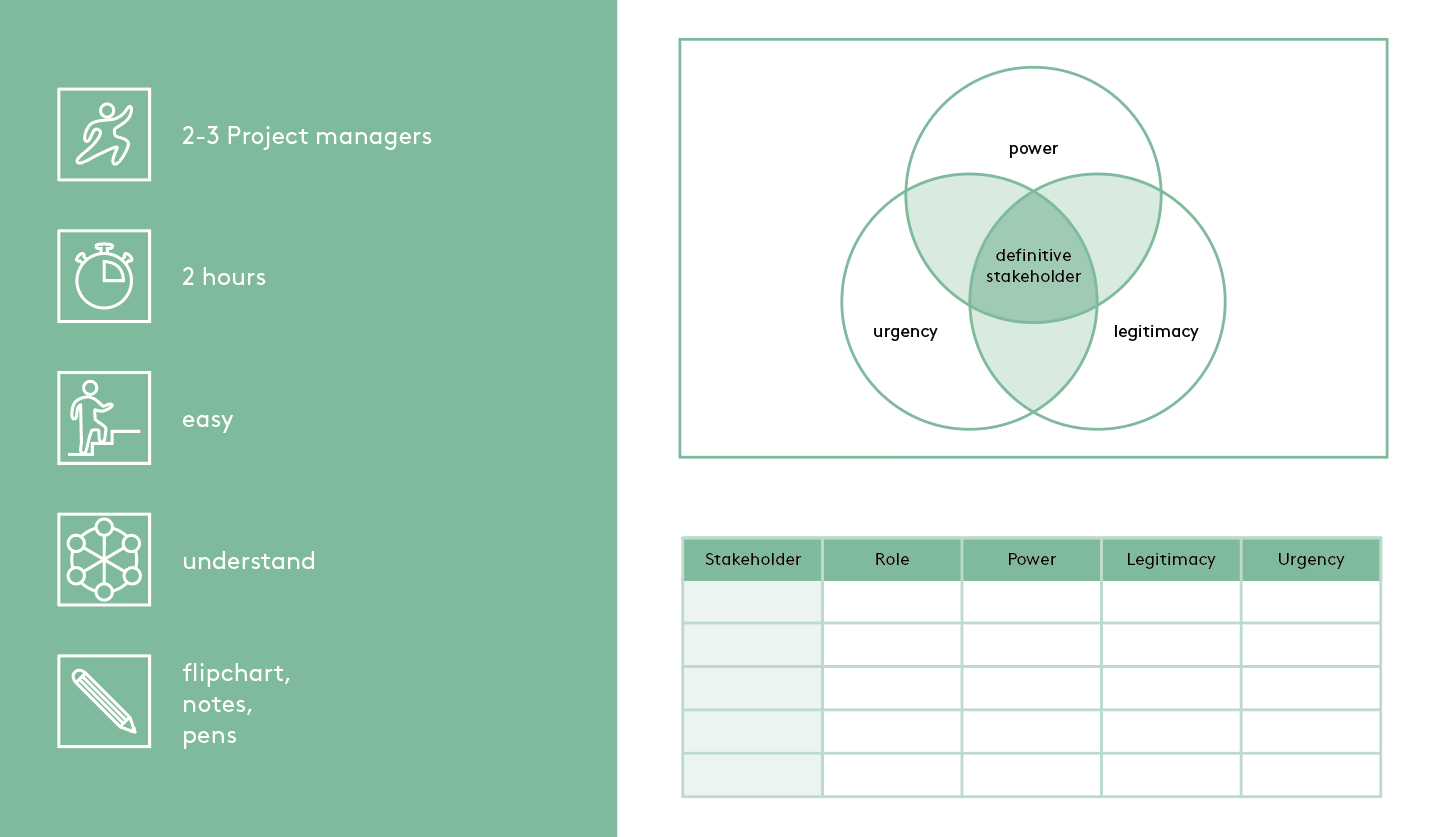
Step-by-Step
2. Think about which of the following three attributes you would attribute to stakeholders:
a. Power: The ability of stakeholders to influence the performance, activities, operations, and outcomes of a project, i.e., one stakeholder A can make another stakeholder B do something that B would not have done otherwise.
b. Legitimacy: the authority to make claims. Look for stakeholders who are entitled to make claims that are considered legitimate.
c. Urgency: the degree to which stakeholder claims require immediate attention. How important it is to respond quickly to stakeholder expectations and demands?
More about the tool
Testimonial



